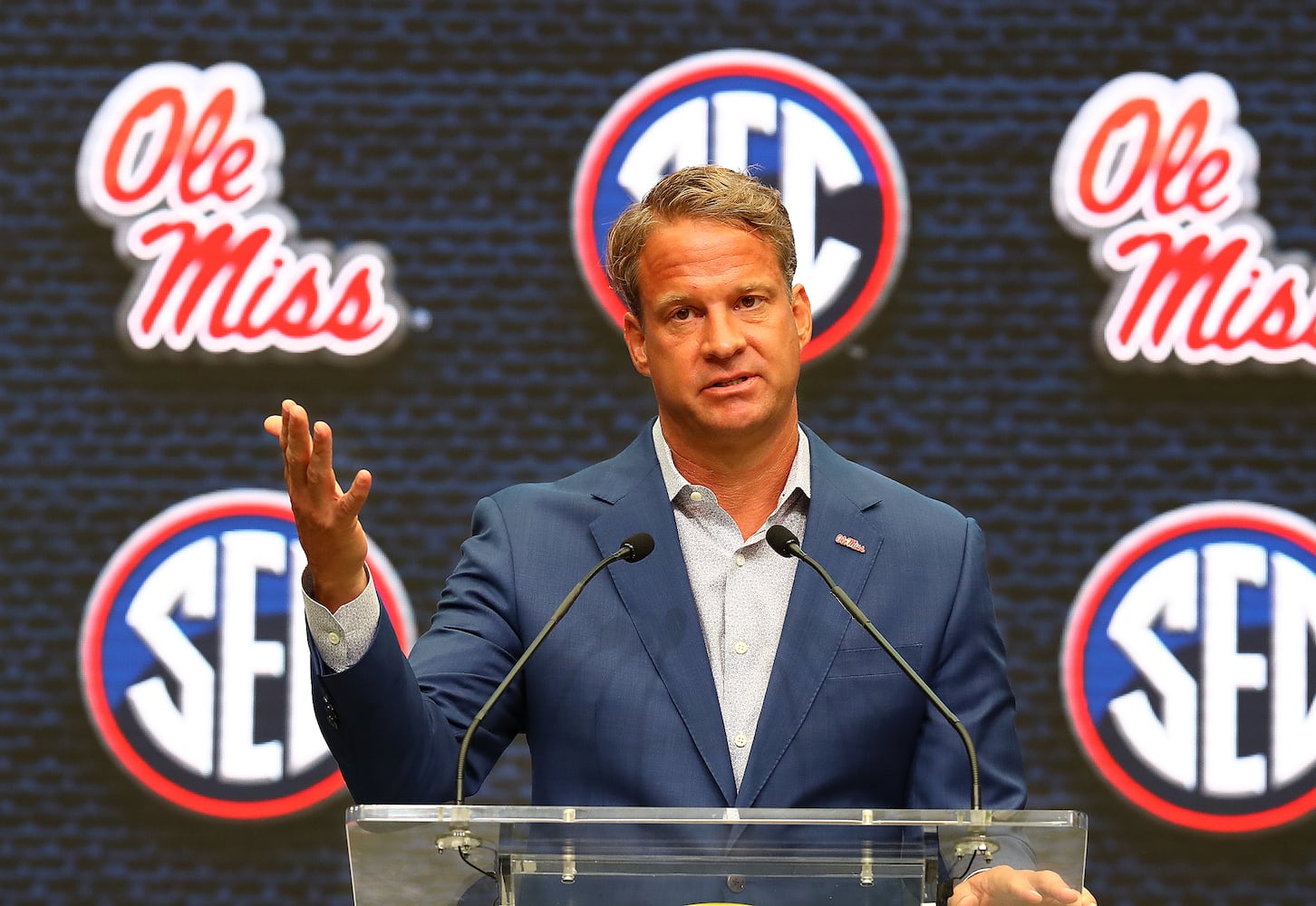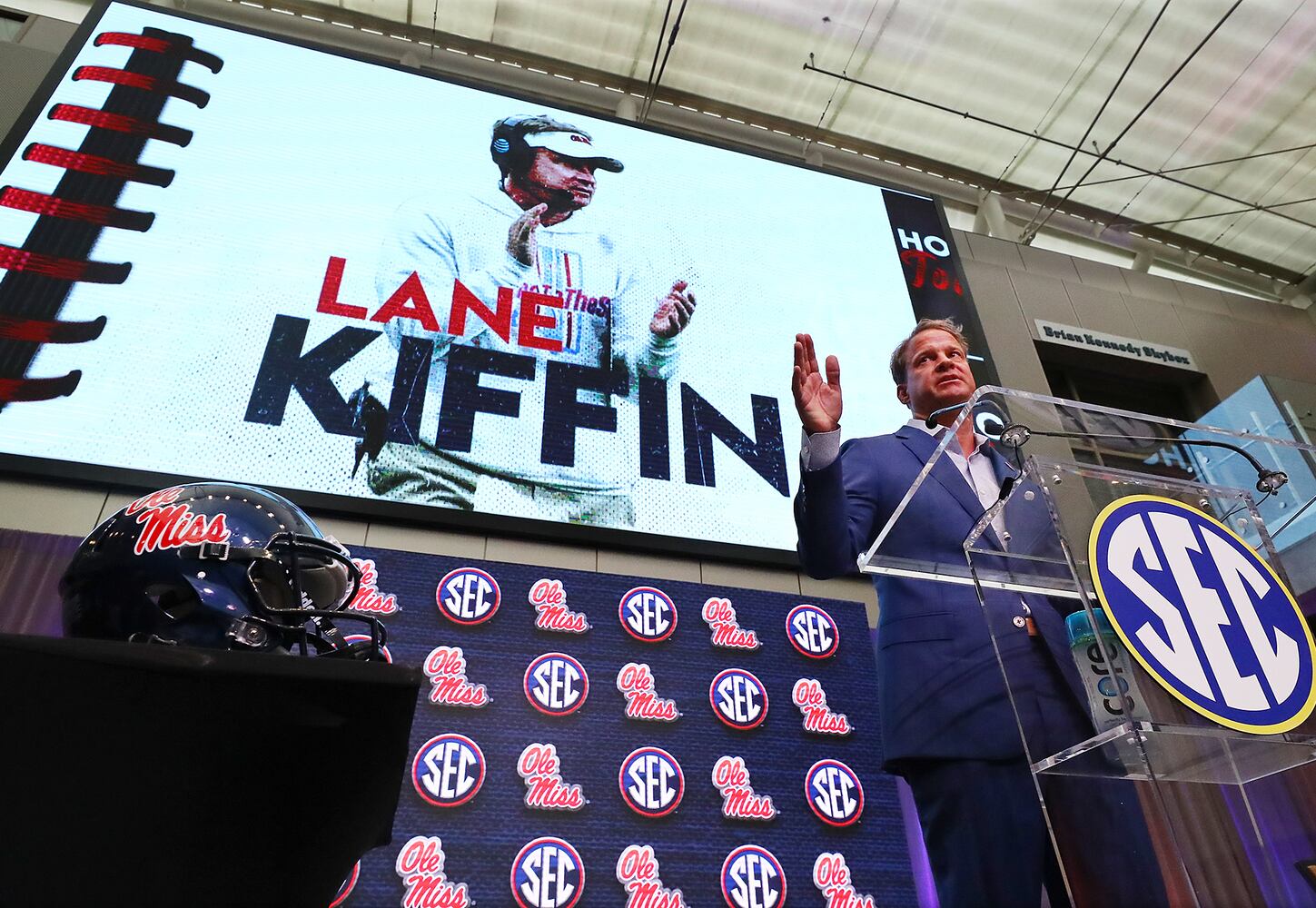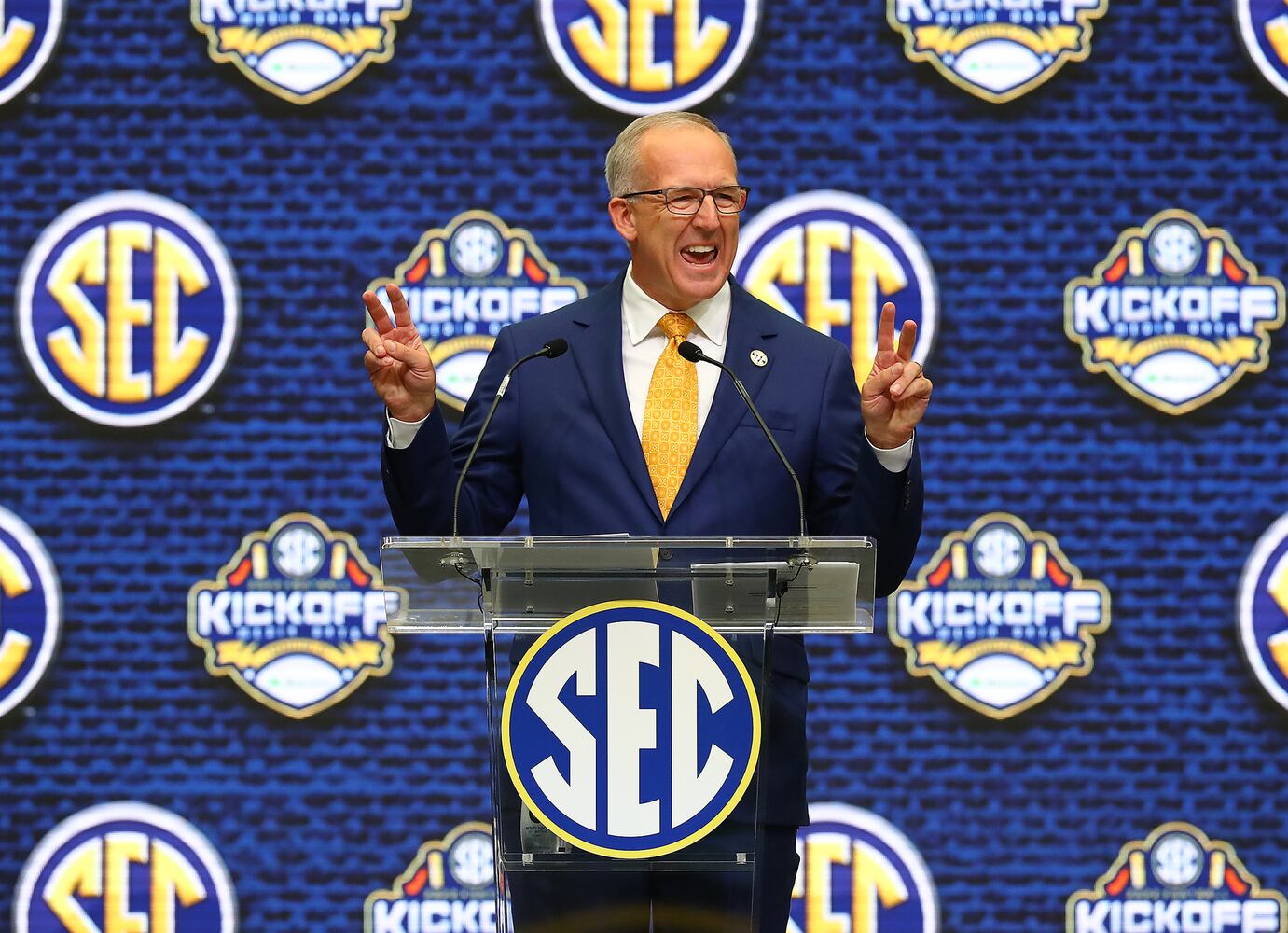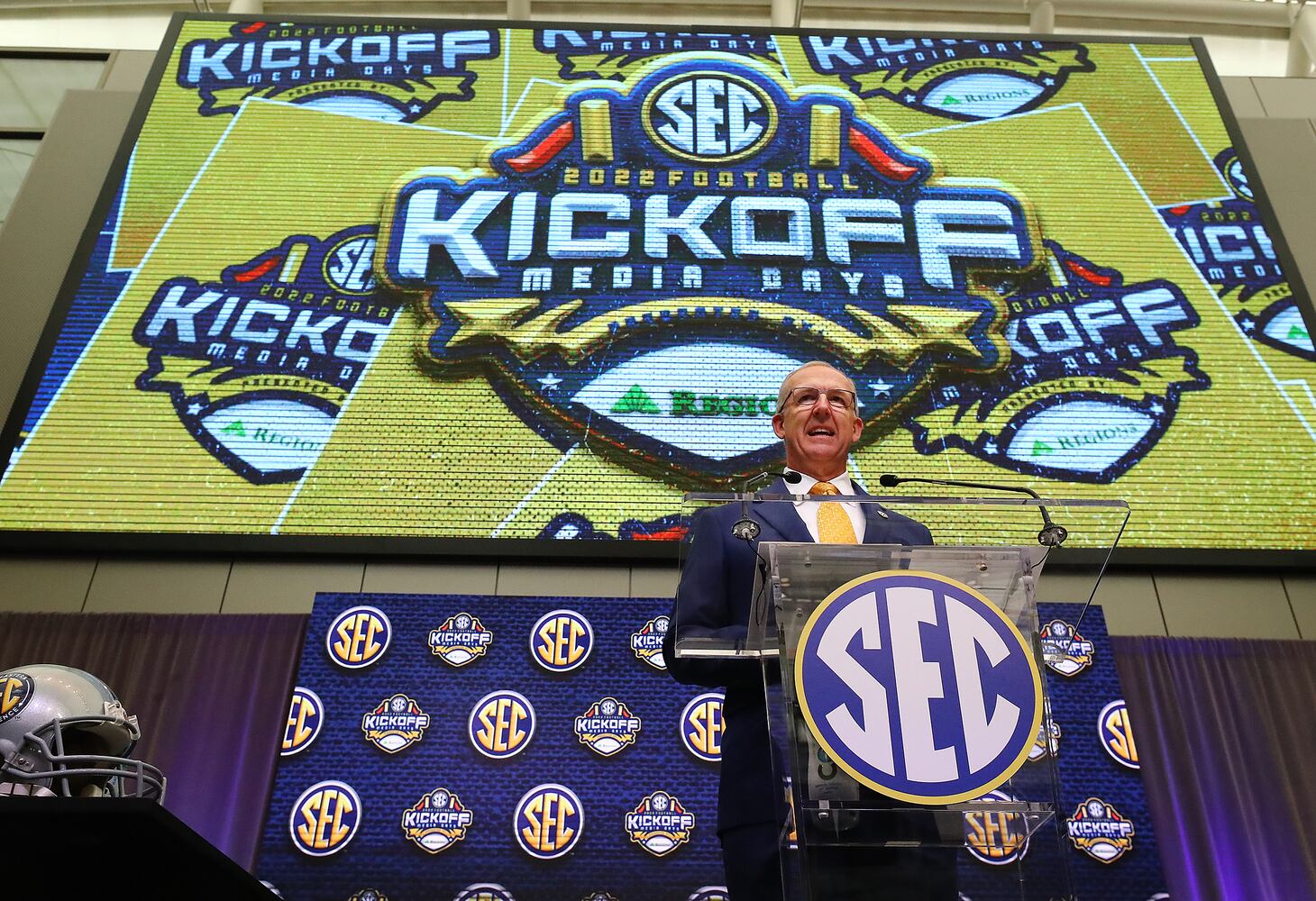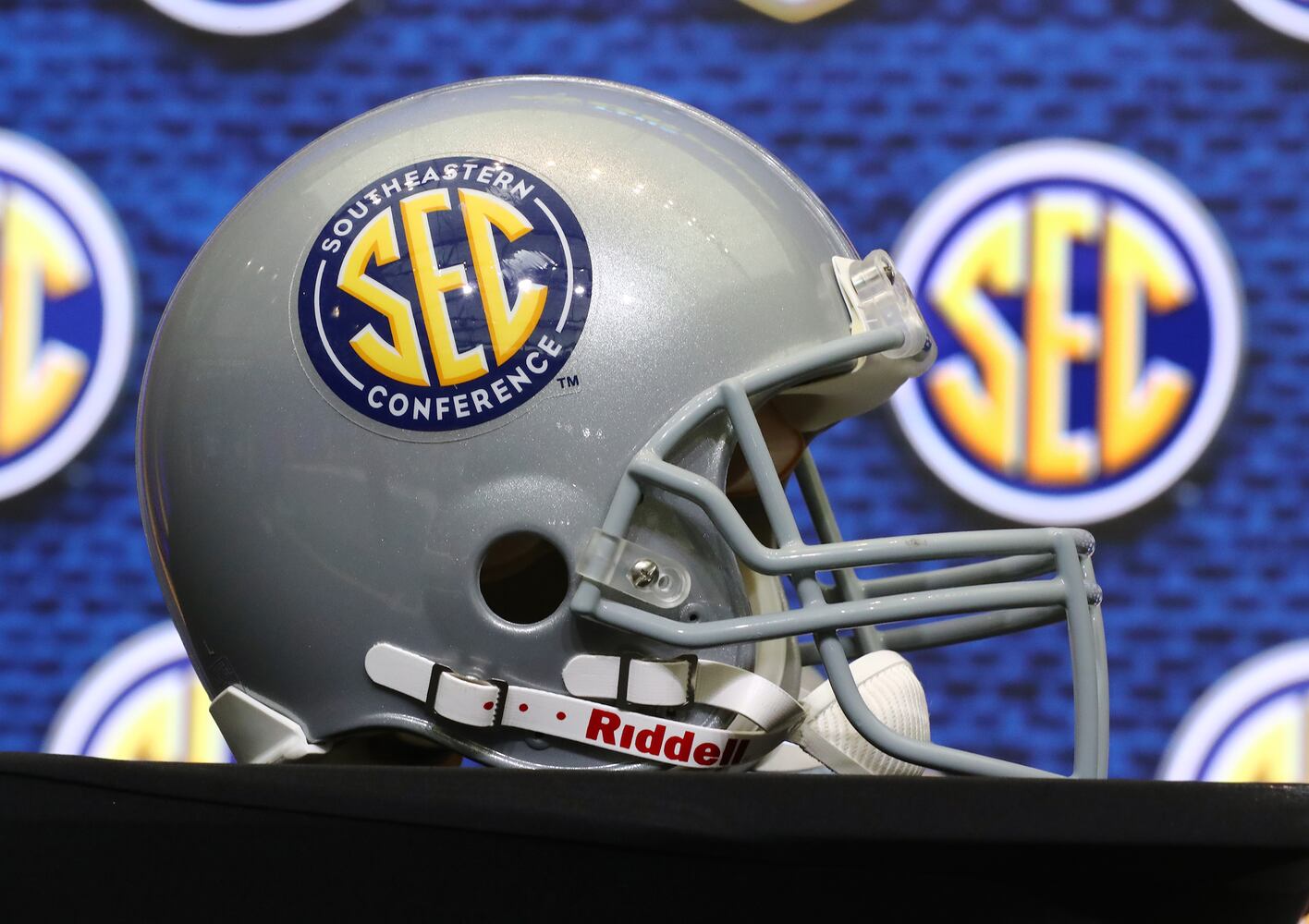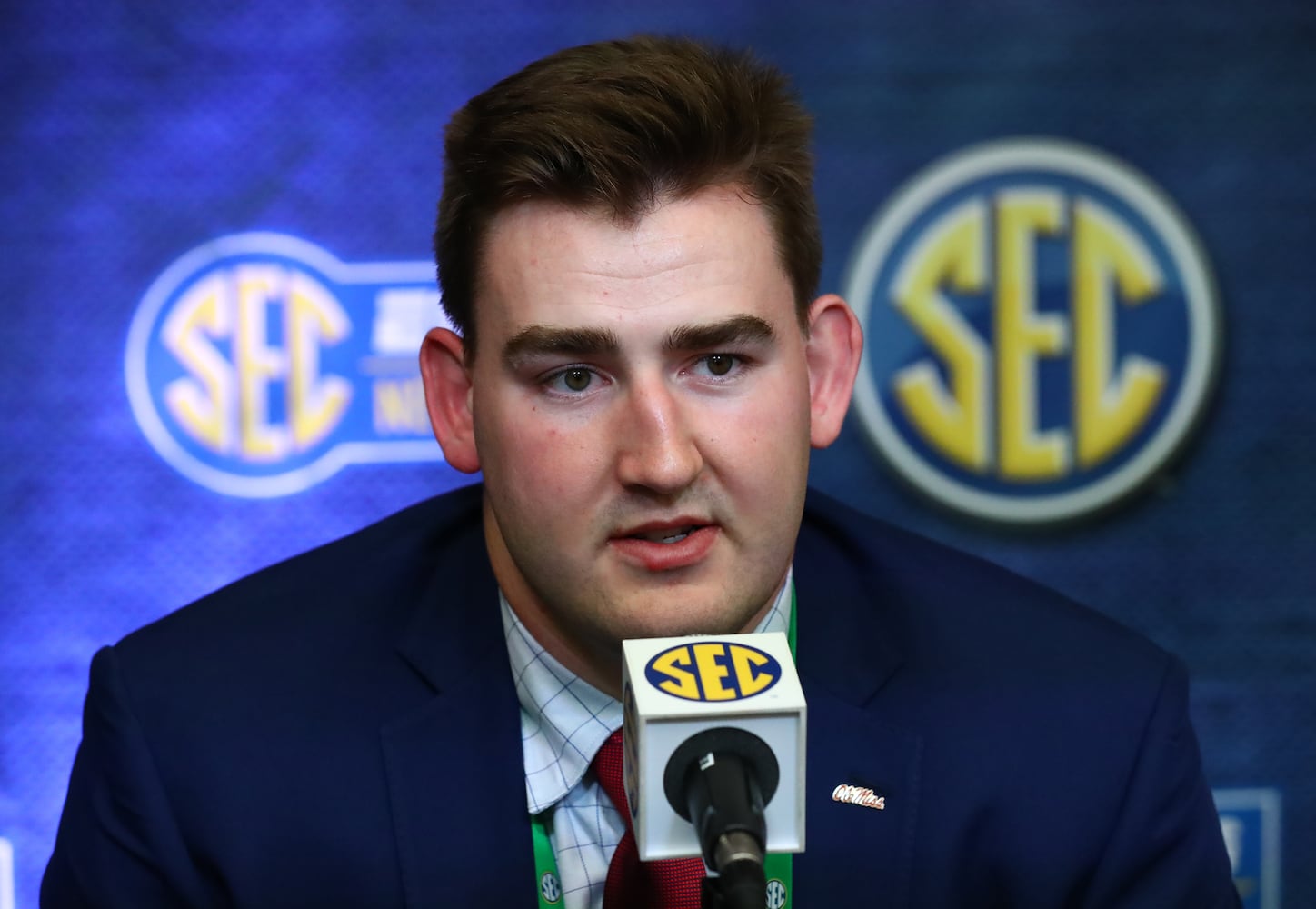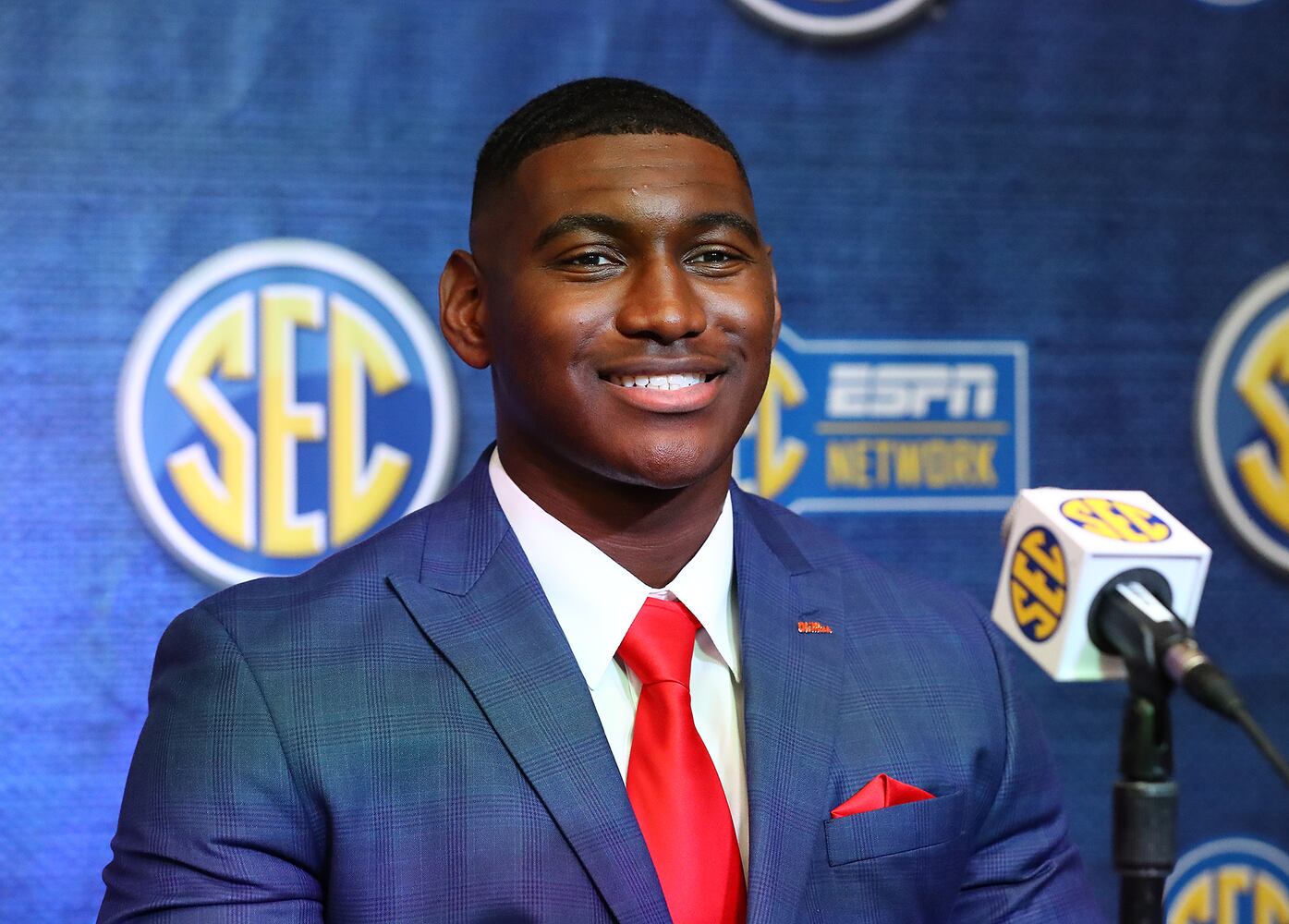Nobody could have envisioned a sport like this. There’s no governing body, the NCAA having long ago washed its hands. There’s an NCAA tournament for every collegiate sport except FBS, which means “football bowl subdivision.” The greatest power rests in conferences, though they’re in constant flux and the sport’s biggest name doesn’t belong to one, at least not in football.
Those who play the sport can bank serious money, same as those in the NFL. Those who play the sport can move from campus to campus without having to spend much time in an actual class. Those who play for schools based in Los Angeles will soon know the charms of a conference game in New Brunswick, N.J.
The closest thing the sport has to a czar is Greg Sankey, commissioner of the almost-almighty SEC. His appearance at the conference’s Media Days on Monday was the source of much anticipation, though much of it became Sankey singing his annual victory song.
Asked about the possibility of college football becoming a gathering of superleagues, Sankey said, “This is a superleague.” Asked if the SEC’s latest additions (Texas, Oklahoma) beat the Big Ten’s (USC, UCLA), he said yes. Not that he’s biased or anything.
“Times are changing more rapidly than ever,” Sankey said.
Then: “I told our coaches (at the SEC meetings last month) that it’s never going to be the same, but it doesn’t have to be the way it is.”
The way college football is? Well, it’s different in a way that mightn’t be sustainable. Whispers hold that NIL money, for some programs, could reach nine figures. Whispers hold that, in the effort to stay within hailing distance of the SEC and Big Ten, two of the other three Power Five conferences will be forced into some sort of merger, which would leave the third in a world of hurt.
Sankey again: “We cannot go on as we are.”
By “we,” he meant “them.” The SEC, he reminded an audience that needed no reminding, has produced six different football national champs since 1997. What he didn’t say was that the arrival of Texas and Oklahoma will raise that total to eight. That’s half the 16-team league.
Those hoping for a hint of greater tectonic shifts from Sankey were left wanting. The SEC doesn’t have to do anything to keep up. It’s so far ahead as to have lapped the field. “The SEC will not be complacent,” he said, “even though we’re in a position of strength.”
Then: “We’re comfortable at 16 (members).”
The Big Ten is adding two teams from the same city. The SEC’s footprint is wide, yes, but it’s not entirely scattershot. The 16-team SEC will include teams from 12 different states, none beyond the Central Time Zone. In a tweak of the Big Ten’s California dreaming, Sankey said: “We are in the southeast quadrant of the United States.”
NIL money, he allowed, needs some rethinking. It has existed for 13 months. It took boosters 13 seconds to figure how to bring what was once transacted under the table into some measure of legal compliance. Sankey spoke of “incredible disparities.” And then, not to say he told us so: “This is exactly what we warned about in 2019. A patchwork network of state laws is the last thing we wanted.”
Sankey was the chief proponent of an expanded College Football Playoff, which the Big Ten, Pac-12 and ACC quashed. (This was before the Big Ten poached two of the Pac-12′s schools.) He offered nothing new, playoff-wise, but the SEC hasn’t exactly gone hungry. Every championship game since the CFP’s inaugural season has included at least one SEC representative. Two of the past four have featured two.
The SEC commissioner didn’t offer a road map as to where college football is headed. Even he can’t know everything and, with college football, nobody knows much of anything. What is known is that Sankey’s league will be fine no matter what.
“We’ll watch what happens around us,” he said, “and be thoughtful but be nimble.”
That mightn’t have been meant as a warning. It sounded like one, though.
About the Author
The Latest
Featured
